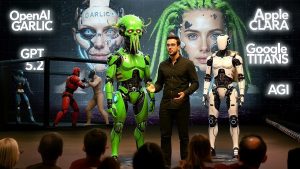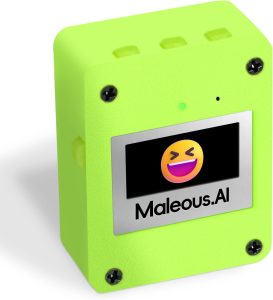Exploring AI Innovations Transforming Workflows and Creativity

Artificial intelligence (AI) continues to evolve, bringing groundbreaking tools and features to diverse domains. From design enhancements to voice modulation, AI’s capabilities are expanding.
This article examines the latest updates in AI, highlighting tools set to revolutionize creative industries. Discover features that enable voice design, interactive collaborations, and advanced computer interactions.
Remote Control AI: Aeropic’s Latest Tool
In a significant development, Aeropic introduced a language learning model (LLM) capable of remote computer control. This innovation showcases potential in automating repetitive tasks.
Examples demonstrate this tool navigatingYouTube to skip ads or help fill job applications by scraping websites and completing forms with AI-generated inputs, potentially saving users time and effort.
Voice Design: Tailoring Unique Digital Voices
11 Labs’ new feature allows users to generate voices from text prompts, offering vast creative possibilities.
From creating a pirate with a unique accent to crafting movie trailer voices, this tool demonstrates how AI can bring fictional and expressive voices to life.
Collaborative AI Workspaces: Canva’s Whiteboard
Canva enhances its tools with a whiteboard plus AI feature to support collaborative workspaces, enhancing productivity.
Users can perform SWOT analyses collectively and utilize AI to summarize input, making it easier to share concise summaries in collaborative settings.
This feature promotes visual learning, making it simpler than ever to organize thoughts and projects without relying solely on text documents.
New AI Models: Claud’s Sonet 3.5
Claud’s recent release includes innovative models like Sonet and Haiku 3.5, opening new possibilities for remote computer interface applications.
Examples of AI automation include skipping ads or effortlessly completing online job applications, demonstrating efficiency in digitized processes.
AI’s potential to navigate complex digital tasks autonomously paves the way for further integration into everyday tech solutions.
Twitter’s AI Move: Gro API
Twitter releases the Gro API, enabling developers to leverage Twitter’s data for AI projects.
While usage is still debated, the API’s potential lies in customizing user experiences by processing real-time social data.
Developers can create personalized content or moderate interactions more effectively with this AI access.
Motion Capture Without Gear: Runway’s Act One
Runway introduces motion capture technology without traditional gear, marking a breakthrough in video and film production.
This feature allows actors’ movements to be digitally captured and mapped onto characters, reducing the need for cumbersome suits.
Actors’ natural performances can seamlessly translate into digital environments, enhancing creativity without extensive equipment.
AI Image Editing: Ideogram and Midjourney Advances
Ideogram and Midjourney introduce new AI image editing capabilities, making complex image modifications accessible.
Tools comparable to Photoshop, these enhancements simplify tasks like altering specific image sections or extending its scope.
Such advancements democratize creative tools, bringing professional-quality editing to a broader audience.
AI Video Generation: Mochi and Hyper
Open-source Mochi One and Hyper 2.0 showcase impressive AI video generation capabilities, pushing the boundaries of digital creativity.
These tools provide realistic visual effects without requiring extensive graphics expertise, catering to diverse creative demands.
Their potential in creating animations offers users engaging and versatile visual storytelling options.
Streamlined Photo Management: Google Photos Update
Google Photos introduces enhanced search functionalities, transforming how users access their photo libraries.
By identifying objects or individuals, this AI feature creates organized albums, simplifying navigation.
This development illustrates AI’s role in improving user-friendly digital experiences, enriching the way we interact with personal media.
AI continues to shape industries by introducing efficient and creative solutions. Its advancements simplify complex tasks.
From voice creation to video generation, these tools provide transformative possibilities, paving the path for future innovation.





